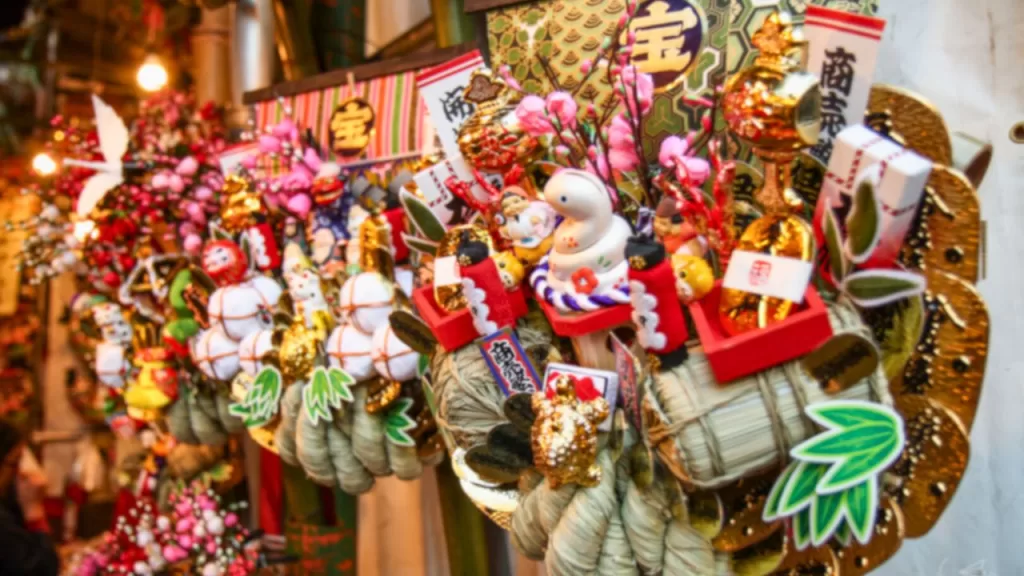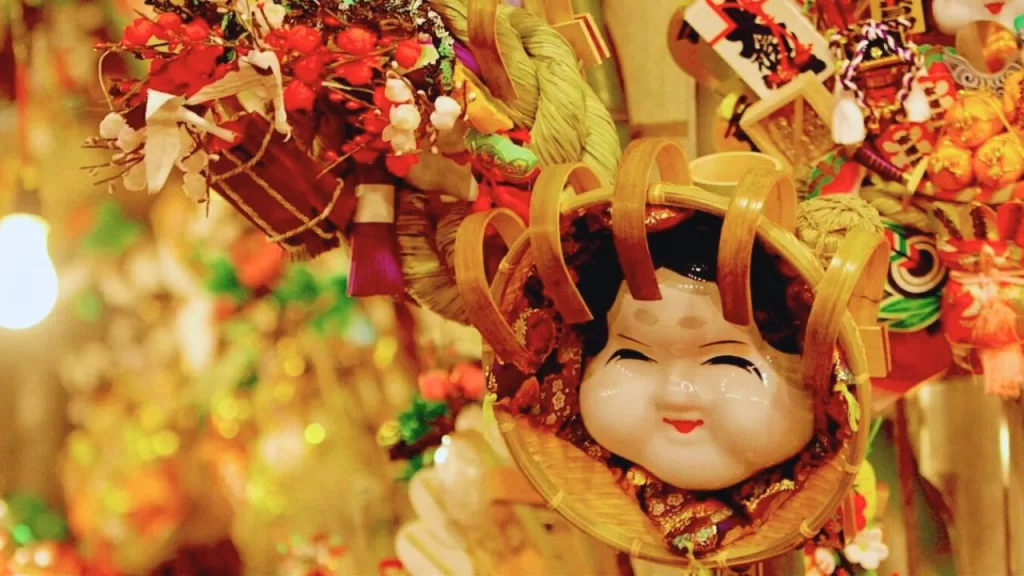Torinoichi Fair: A Celebration of Local Tradition and Commerce
Torinoichi Fair
Tokyo is rich in traditional events, and one of the most anticipated is the Torinoichi Fair, a celebration boasting nearly 370 years of history.
Embrace the lively atmosphere and vibrant traditions of Torinoichi, one of the iconic Tokyo events in November, where the streets come alive with colorful stalls, festive music, and the spirit of good fortune as visitors and locals gather to partake in this centuries-old tradition of bartering and offering prayers, creating an unforgettable experience that immerses you in the cultural tapestry of Tokyo.”

Effervescent Atmosphere at Annual Event
Scheduled to be held on November 4, 16, and 28 this year, the Torinoichi Fair 酉の市 is an outdoor marketplace known for selling lucky charms or Kumade. These beautifully decorated charms are believed to bring good fortune and protect against misfortune. If you get a lucky charm, placing the Kumade in your house or office is customary as they are also believed to usher in good fortune for business.
Each year, in November, crowds of people descend upon the fair to buy a Kumade and revel in the spirited atmosphere. With hundreds of beautifully crafted Kumades, the fair presents a cornucopia of visually striking displays.

Traditional Symbolism: The Otorisama Shrine
One of the main locations for the Torinoichi Fair is the Ootori-jinja shrine. The dates may vary yearly as the fair could be held two to three times every November at different shrines and temples throughout Tokyo.
Referred to as Tori-no-Ichi, this annual traditional festival takes place on designated rooster days in November, with devotees wishing for good luck and prosperity. Rooted in the Asakusa area since the Edo period, it occurs at Ōtori Shrine and Chōkokuji Temple from midnight until midnight on those chosen days.
Adhering to Tradition: Origins And Practices
The day kicks off at midnight on November 3, with Taiko drumming marking the start of festivities.
Originating from celebrating an auspicious Japanese day during the Edo era, Tori-no-ichi dates back to a traditional fair held where Ohtori Shrine now stands. Initially, a harvest festival associated with Senso-ji Temple’s ritual release of roosters evolved into a local celebration for patrons seeking health, fortune, and commercial success.
At these highly-charged fairs, vendors enthusiastically sell bamboo rakes or Kumades, ornately decorated and said to bring happiness and prosperity. These features make Tori-no-ichi unique among Japan’s multitude of festivals.

Enchanting Rake Designs Bring Luck
One key aspect that adds charm to this fair is why these special rakes are sold at Asakusa’s Tori-no-Ichi. Initially adorned with only an ear of rice signifying harvest bounty, their designs have evolved significantly over time, featuring thousands of varieties for the Tori-no-Ichi Fair alone.
By Edo era standards, adding masks (Okame) was known to bring good luck, which led to incorporating intricate designs such as treasures, fans, portable shrines, and even animals! These embellishments symbolically work like magnets attracting wealth (“raking” in your luck), prosperity (“gold”) & good fortune (“silver”), thus becoming must-have assets, especially amongst businesses.
Modern renditions can be found decorated with colorful themes, such as cats, dogs, pandas, or even huge cat paws!
Joyful Hustle-Bustle of Negotiations
Buying these rakes can be an immersive experience in itself. Each purchase involves light-hearted negotiations or haggling with vendors, often resulting in amusing conversations between buyers and sellers about final prices.
Once agreement is reached on price negotiation through exchange rates per tradition, when sellers return balance change after purchases – buyers typically refuse by stating, “This is a gift for you,” – which gives a unique flavor of cultural charm & respect towards custom vendors who serve them.
Artful Display within Celebration
Following successful negotiations, appreciative vendors respond with rhythmic handclapping routines thanking buyers while blessing them with health & prosperity wishes. This lively interaction, coupled with a cacophony of joyous shouts, amplifies the festive mood tenfold and underscores local tradition being carried forward generation by generation.
in 2025 celebrations will begin on November 11 & November 23, respectively, heralded by the first drumbeat at midnight (Ichiban Taiko). The two-day event runs around the clock non-stop till the next day while surrounding areas buzz late into the night, elevated by similar commotions other vendors sell their goods around the Ohtori shrine vicinity –
This annual occasion is seen as a presage indicating New Year’s advent during the festive month, followed by similar second (& occasionally third) events making jovial farewell greetings more preferred among festival-goers instead usual ‘goodbye’ during the year-end season before welcoming a new start come New Year’s Day celebrations.
Immerse yourself in the enchanting blend of spiritual reverence and festive ambiance at Torinoichi, a renowned Tokyo event in November where visitors flock to purchase good luck charms and talismans from the bustling stalls, igniting the air with anticipation and joy as the vibrant energy of Torinoichi intertwines with the rich heritage of Ningyo Ichi, the traditional Japanese doll market, creating a captivating celebration of culture and blessings in the heart of Tokyo.